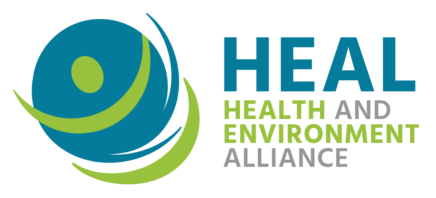As the European Commission is currently finalising the post-2027 Multiannual Financial Framework (MFF) proposal set to be launched on 16 July 2025, HEAL has sent a letter to the EU Commission President, the Executive Vice-Presidents, and Commissioners urging to scale up public investments into health protection from pollution and climate change in the next EU budget.
Health and environmental groups wrote to incoming Commission president Ursula von der Leyen today about the EU’s golden opportunity to set out a long-term chemicals strategy that prioritises health and environmental protection under the European Green Deal.
Pollution from synthetic chemicals is a major and growing threat to people and wildlife. Today, chemical pollution has already reached the most remote corners of the globe, from the deepest oceans to the highest mountains. Industrial chemicals have permeated our bodies to the point that researchers describe babies born today as “prepolluted”. As adults, we all harbour some 300 synthetic substances our grandparents did not, of which many are proven to be toxic.
This pollution is linked to a rise in severe health and environmental problems throughout Europe that are adding billions of Euros to public healthcare bills. There is evidence that exposure to chemicals contributes to adverse effects on health and environment, threatens especially pregnant women, deforming our children in the womb and injuring their developing brain, stunts our intelligence, is linked to fertility impairments, increases incidences of diseases such as cancer and threatens the collapse of Europe’s ecosystems.
Europe has rightly charted a course towards a circular economy. However harmful and even banned chemicals are increasingly found in consumer products made from recycled content, including toys, frequently because firms do not know the chemicals content of the materials they are handling. Toxic recycling is reducing trust in recycled products and delaying the transition to a circular economy.
The EU strategy to address endocrine disrupting substances (EDCs) is now 20 years old. Yet the Commissions has largely failed to deliver on the commitment to manage the risks from these chemicals.
REACH was set up out to phase out 1,400 of the most dangerous substances and to provide a powerful spur for firms to develop less harmful alternatives. A decade later, only 43 are subject to authorisation while the almost blanket authorisations being granted by the EU of continued use of substances of very high concern (SVHCs) is disincentivising the use of safer alternatives. Furthermore, some of these SVHCs such as phthalates are currently allowed in food contact materials.
The law usually takes decades to catch up with chemicals that should never have been used. Meanwhile people and the environment are unnecessarily exposed.
In the last decade, the EU institutions have gained considerable knowledge, including a range of policy evaluation activities. These identify a number of gaps in the EU legislation, which undermine the protection of people, wildlife and ecosystems against harmful chemicals. But these gaps remain largely open without a clear strategy on how to address them. The EU now needs to transform this knowledge base into urgent action.
We wish to echo the European Parliament and Council in calling for a swift preparation of the long-overdue non-toxic environment strategy, as well as action on endocrine disrupting chemicals (EDCs) and to detoxify the circular economy.
Promises of sustainability while business continues as usual is not an option. The EU needs to be more specific on what a strategy is aiming for, and to clarify that this includes moving towards reducing exposure to hazardous chemicals, to phase out and substitute the most problematic ones and support research and innovation towards safer alternatives.
The European Commission now has a golden opportunity to set out a long-term chemicals strategy that prioritises health and environmental protection under the European Green Deal.
Read the Annex: Clean the Circular Economy – Toxic Recycling.

